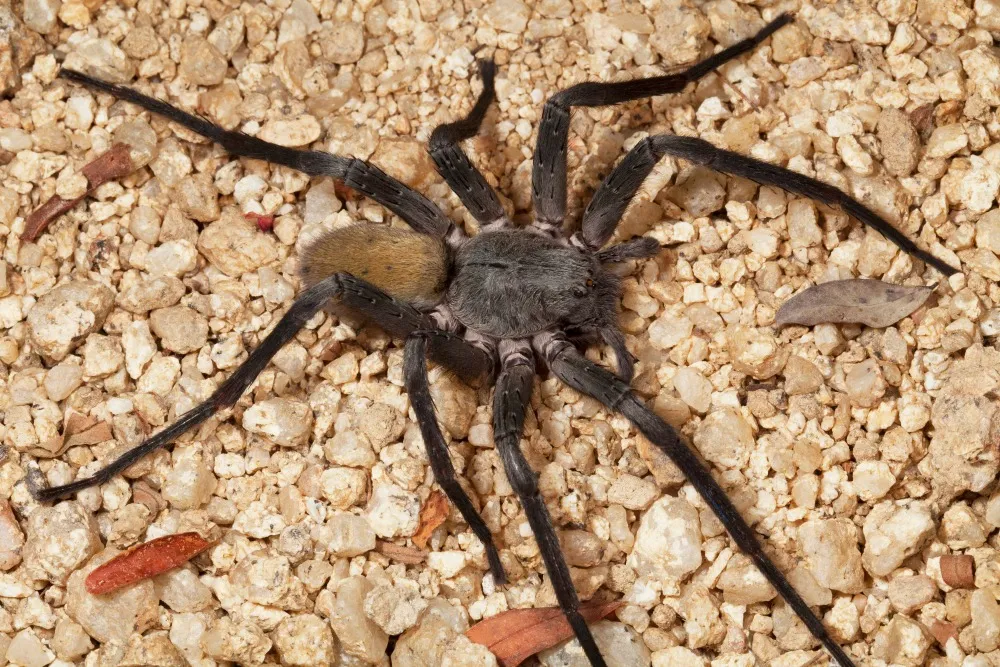Huge New Spider Species Discovered in Mexican Cave
Califorctenus cacachilensis is the width of a softball and represents a new genus of arachnids
/https://tf-cmsv2-smithsonianmag-media.s3.amazonaws.com/filer/db/cd/dbcdf1e4-e8a8-45af-a1c8-5789c31e8a0d/spider_1.jpg)
Arachnophobes, go to your happy place and please click here. Researchers from the San Diego Natural History Museum along with other experts recently unveiled a new spider species found in Mexico that is roughly the size of a softball, reports Deborah Sullivan Brennan at the Los Angeles Times.
According to a blog post from the museum, in 2013 field entomologist Jim Berrian and a team of researchers found the spider while exploring the Sierra Cacachilas, a small mountain range in Baja California Sur in Mexico. Investigating a cave in the area, they noticed a giant exoskeleton hanging from the ceiling. Instead of running back to their hotel and hiding under the covers, they decided to return that night, since they identified the spider as belonging to a genus of arachnids that are often nocturnal. That night, in the darkened cave, the team got their first look at what is now known as Califorctenus cacachilensis, or the Sierra Cacachilas wandering spider. The official description of the new spider appears in the journal Zootaxa.
“When I saw these spiders for the first time, I was very impressed by their size,” Baja spider expert Maria Luisa Jimenez, a researcher at Centro de Investigaciones Biológicas del Noroeste, says in the blog post. “In all my experience over the years collecting spiders on the peninsula, I had never seen a spider this large. I suspected that something new was waiting to be described.”
The researchers searched the area, finding about two dozen specimens in a cave, an abandoned mine shaft and the remnants of a pit toilet. They collected eight samples for further study, Brennan reports.
The head and legs of the spider are coffee brown and the abdomen is yellow. Though it is fairly plain, Berrian describes it as striking. The body is about an inch long while the legs are about four inches across. According to the blog post, the arachnid belongs to same family as the Brazilian wandering spider—a notoriously deadly spider.
But Cacachilensis is so different from its dangerous cousin and other related species that the researchers put it in a different genus. While its fangs are visible and considering its size, the spider is surely intimidating, a bite from one is not fatal.
Finding a new species of spider isn’t such a huge deal—many are discovered each year—but Michael Wall, another member of the expedition, thinks this one is special. “The odds of discovering a new species are pretty high,” he tells Brennan. “But...generally, [most] new species discovered are itty-bitty things that people don’t pay attention to, so given the size of this spider, that was surprising.”
While Cacachilensis is pretty good sized, it’s nowhere near that world's largest by leg span, Heteropoda maxima, the giant huntsman spider which lives in Laos. Its legs can grow as large as 1 foot and it also stands accused of spinning webs out of nightmares and feasting on children’s dreams.
